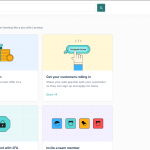Lendsqr’s system automates loan request management, filtering top customer requests and handling complex decisions for lenders.
Occasionally, some customers will complain about their loan requests being declined. Over time, we’ve identified many causes, but these 10 are the most common.
Customer is found in karma blacklist system
When customers request loans from a Lendsqr-powered lender, the system checks their phone, BVN, and email against Karma, one of Nigeria’s largest blacklist services. If it finds a match, the system immediately declines the request because a lender previously reported them for fraud or unpaid loans.
If Karma flags a customer, be glad. They are not the type you want as customers. However, if you confirm they were wrongly blacklisted, you can whitelist them for loan pre-qualification.
Too many failed loan requests
To prevent misuse or bad customers gaming the system, lenders can set a maximum cap on loan requests within a specific period. For example, if the limit is 100 requests per week, the system automatically declines the 101st request for this reason.
As a lender, you would need to make a decision about how much nuisance they can handle from customers’ many loan requests and set their threshold accordingly.
However, if it’s confirmed that the customer has been unduly declined and you want to give them a loan without tampering with your settings, you are able to whitelist them for loan pre-qualification.
Read more about how whitelisting works.
Previously declined by the lender
As a lender, if you previously declined your customer’s loan for valid reasons and know their situation hasn’t changed, you can use this setting to block them from reapplying for new loans.
It’s almost like a nuisance prevention setting like the previous one.
However, if a customer was wrongly declined and you want to approve their loan without changing your settings, you can whitelist them for loan pre-qualification.
When the borrower has a running/active loan
When a borrower already has an existing loan that is currently active or ongoing, it can impact their ability to take on additional debt.
As a lender, you review the borrower’s debt-to-income ratio, showing how much income goes to debts. If the ratio is high, approving another loan increases the risk of default or financial strain.
However, if you are sure that you want to give them a loan without tampering with your settings, you are able to whitelist them for loan pre-qualification.
The borrower failed the Credit bureau check
Credit bureaus keep records of individuals’ credit history, payment behavior, and debts. Failing this check shows poor credit, such as missed payments, defaults, or high debt levels, making the borrower high-risk. As a result, the system automatically declines the loan request.
As a Lender, you can view the decision data to identify the exact reason for the credit bureau check failure.
However, if you are sure that you want to give these borrowers a loan without tampering with your decision settings, you are able to whitelist them for loan pre-qualification. Read more about how whitelisting works.
The borrower has been credit delinquent on the system
A borrower becomes delinquent when they fall behind on required payments and fail to meet their financial obligations within the specified timeframe.
When the system flags a borrower in this category, their loan requests are declined.
If you are sure that you want to give credit delinquent borrowers a loan without changing your decision settings, you are able to whitelist them.
The borrower has paid a penalty before
Paying a penalty means the borrower broke terms of a previous loan, indicating poor financial management or repayment issues. When the system detects this, it automatically declines the new loan request.
If your customers has this type of history, they must have delayed paying a loan amount. In the default decision model settings, the maximum value for these parameters in the ecosystem is zero, as there should be no tolerance for such customers.
However, if the borrower has settled the loan and you wish to allow this loan request from such customers without changing your decision settings, you can whitelist them.
Failed selfie BVN checks in the system
This process verifies the borrower’s identity by matching their selfie with their BVN details. If verification fails, it suggests inconsistencies or mismatches in the provided information, raising concerns about possible fraud or impersonation.
This is a red flag. A lender should not give loans to these borrowers. However, if you are sure that you want to give these borrowers a loan without tampering with your decision settings, you can request another means of verification or insist that they upload a better picture for selfie BVN verification.
You are also able to whitelist them for loan pre-qualification if you are sure you wish to give them a loan. Read more about how whitelisting works.
The borrower has changed their employment category more than twice
If a borrower changes their employment category more than twice, the system declines their loan request. Frequent changes signal instability, raising concerns about their income consistency, job security, and ability to repay the loan.
The maximum limit is currently set to 2 in our default decision model. The lender can modify these settings to their preference.
However, If you are sure that you want to give these borrowers a loan without changing your decision settings, you are able to whitelist them for loan pre-qualification.
The borrower changed their income category more than twice in a month
Like employment category changes, frequent income fluctuations suggest financial instability or irregular earnings. As a lender, you prefer borrowers with steady, reliable income, so repeated income category changes raise a red flag and lead to a loan request decline.
The default decision model allows a maximum of 3 income increments. If a borrower changes income categories more than 3 times in 30 days, the system declines their application.
As a lender, you can increase this limit in the decision settings, however, if you are sure that you want to give them a loan without tampering with your settings, you are able to whitelist them for loan pre-qualification. Read more about how whitelisting works.
The borrower failed scoring on the system
Lenders use various scoring models to assess a borrower’s creditworthiness and risk profile. The Lendsqr scoring model evaluates eligibility using factors like age, marital status, monthly income, employment sector, and location.
For instance, you can configure a loan product to be accessible by only borrowers within a certain age range or work in the specific sector of employment which you configured.
Failing the scoring process means the borrower’s financial profile does not meet the lender’s criteria or falls below the set threshold, causing the system to decline their loan request.
When a borrower fails scoring, check the decision data to identify the exact reason for failure. Then, modify the scoring criteria in the decision model settings to accommodate the borrower or whitelist them.
Also read: How Lendsqr is using AI to transform its processes


